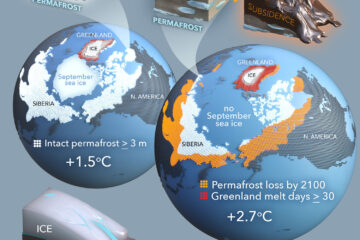Does deep soil N availability sustain long‐term ecosystem responses to elevated CO2?
A scrub-oak woodland has maintained higher aboveground biomass accumulation after 11 years of atmospheric CO2 enrichment (ambient +350 μmol CO2 mol−1), despite the expectation of strong nitrogen (N) limitation at the site. We hypothesized that changes in plant available N and exploitation of deep sources of inorganic N in soils have sustained greater growth at elevated CO2. We employed a suite of assays performed in the sixth and 11th year of a CO2 enrichment experiment designed to assess soil N dynamics and N availability in the entire soil profile. In the 11th year, we found no differences in gross N flux, but significantly greater microbial respiration (P≤0.01) at elevated CO2. Elevated CO2 lowered extractable inorganic N concentrations (P=0.096) considering the whole soil profile (0–190 cm). Conversely, potential net N mineralization, although not significant in considering the entire profile (P=0.460), tended to be greater at elevated CO2. Ion-exchange resins placed in the soil profile for approximately 1 year revealed that potential N availability at the water table was almost 3 × greater than found elsewhere in the profile, and we found direct evidence using a 15N tracer study that plants took up N from the water table. Increased microbial respiration and shorter mean residence times of inorganic N at shallower depths suggests that enhanced SOM decomposition may promote a sustained supply of inorganic N at elevated CO2. Deep soil N availability at the water table is considerable, and provides a readily available source of N for plant uptake. Increased plant growth at elevated CO2 in this ecosystem may be sustained through greater inorganic N supply from shallow soils and N uptake from deep soil.


